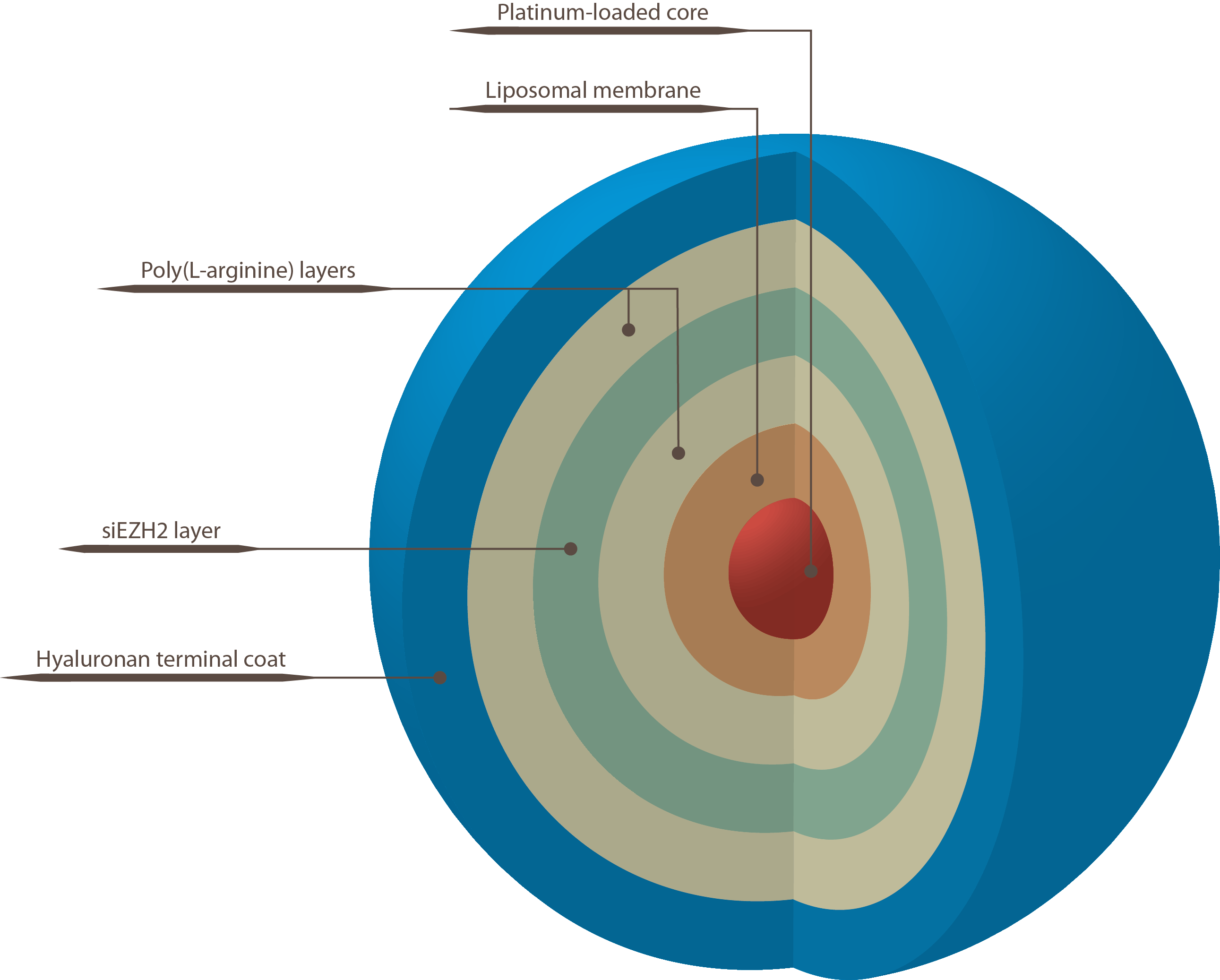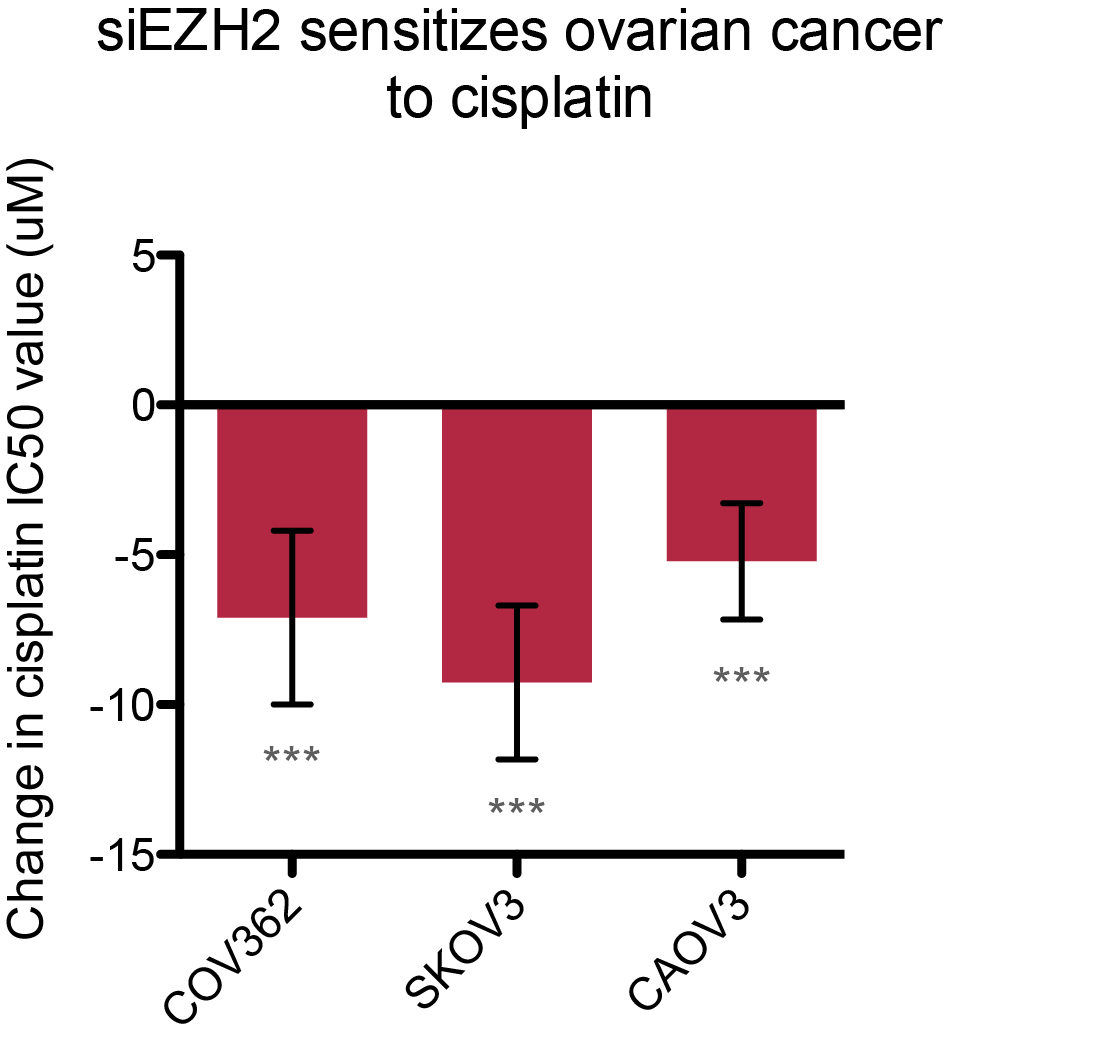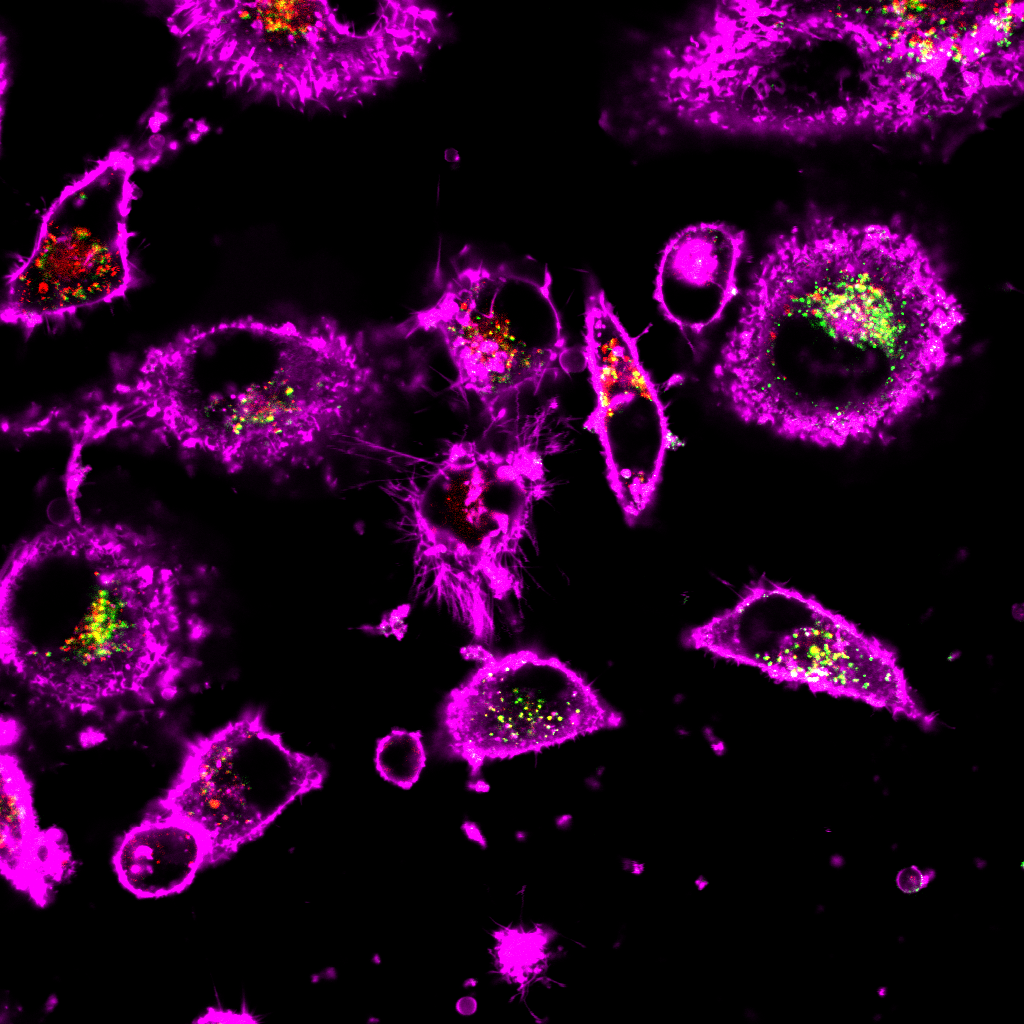Introduction: Layer-by-layer (LbL) assembly is a powerful and established technique for creating composite, multifunctional nanoparticles through the controlled fabrication of nanoscale thin films composed of biologically relevant materials.[1][2][3] LbL particles exhibit multifunctional properties and stability in vivo, making them attractive drug carriers for the treatment of cancer.[4][5][6] This work aims to apply the multifunctional capabilities of LbL nanotechnology towards addressing the unique challenges posed by high-grade serous ovarian cancer (HGSOC).
HGSOC represents roughly 70% of malignant epithelial ovarian cancers and is responsible for nearly two-thirds of ovarian cancer deaths[7][8][9]. The lethality of HGSOC is attributed to its striking capacity to develop resistance against platinum-based chemotherapy like cisplatin.[10] Here we seek to improve the therapeutic response to cisplatin by simultaneously silencing expression of the Polycomb protein enhancer of Zeste homolog 2 (EZH2), which is thought to contribute towards drug-resistance in ovarian cancer.[11][12] Leveraging LbL technology, cisplatin-loaded liposomes will be modified with a polyelectrolyte multilayer shell containing siRNA against EZH2. Co-delivery of the payload will be further facilitated by terminating the multilayer with the polysaccharide hyaluronan, which is known to target cancer cells by both pH dependent and ligand-specific mechanisms.[13]
Materials and Methods:

Figure 1. Drug-loaded liposomes will be sequentially exposed to polyelectrolytes of alternating charge to generate a film composed of poly(L-arginine) (PLA), siEZH2, and hyaluronan (HA).
For preliminary experiments, cellular viability was determined over a range of cisplatin concentrations to calculate the IC50 value. Cells were either untreated before insult with cisplatin or transfected with siEZH2 72 hours prior. For uptake experiments, COV362 cells were treated with LbL nanoparticles at a final concentration of 20 pM and imaged live using a Nikon A1R confocal microscope at 24 hours post-treatment.
The in vivo efficacy of the treatment will be evaluated in an orthotopic xenograft model in immune-compromised mice. All in vivo experiments will be conducted with the COV362 line, due to its genetic similarity with primary HGSOC.[14]
Results and Discussion:

Figure 2. Preliminary in vitro results reveal that silencing EZH2 using siRNA sensitizes COV362, SKOV3 and CAOV3 ovarian cancer cell lines to cisplatin (P<0.001 between cisplatin only and cisplatin plus siEZH2 groups, by ANOVA1 with the Bonferonni post-test).

Figure 3. LbL nanoparticles formed from fluorescent polystyrene cores coated with PLA and HA were used to evaluate uptake by COV362 cells. Live cell imaging demonstrated high degree of nanoparticle internalization, consistent with the targeting capabilities attributed to HA coated particles. Cell membranes are in magenta, lysosomes are in red, and LbL nanoparticles are in green.
Conclusion: Our preliminary data and existing literature provide a strong foundation for the success of this work. We have already demonstrated the sensitization of ovarian cancer cells to cisplatin by depleting EZH2. Furthermore, we have demonstrated that our LbL nanoparticles penetrate into ovarian cancer cells efficiently, indicating that they will be capable of delivering our proposed combination therapy.
The authors thank the Koch Institute Swanson Biotechnology Center for technical support, specifically the Peterson nanotechnology, biopolymer, and flow cytometry facilities.
References:
[1] Caruso, Frank, Rachel A. Caruso, and Helmuth Möhwald. "Nanoengineering of inorganic and hybrid hollow spheres by colloidal templating." Science 282.5391 (1998): 1111-1114.
[2] Sukhorukov, Gleb B., et al. "Stepwise polyelectrolyte assembly on particle surfaces: a novel approach to colloid design." Polymers for Advanced Technologies 9.10‐11 (1998): 759-767.
[3] Donath, Edwin, et al. "Novel hollow polymer shells by colloid‐templated assembly of polyelectrolytes." Angewandte Chemie International Edition 37.16 (1998): 2201-2205.
[4] Schneider, Gregory F., et al. "Multifunctional cytotoxic stealth nanoparticles. A model approach with potential for cancer therapy." Nano letters 9.2 (2009): 636-642.
[5] Poon, Zhiyong, et al. "Controlling in vivo stability and biodistribution in electrostatically assembled nanoparticles for systemic delivery." Nano letters 11.5 (2011): 2096-2103.
[6] Deng, Zhou J., et al. "Layer-by-layer nanoparticles for systemic codelivery of an anticancer drug and siRNA for potential triple-negative breast cancer treatment." ACS nano 7.11 (2013): 9571-9584.
[7] Prat, J. "New insights into ovarian cancer pathology." Annals of Oncology 23.suppl 10 (2012): x111-x117.
[8] Seidman, Jeffrey D., et al. "The histologic type and stage distribution of ovarian carcinomas of surface epithelial origin." International Journal of Gynecologic Pathology 23.1 (2004): 41-44.
[9] KOONINGS, PAUL P., et al. "Relative frequency of primary ovarian neoplasms: a 10-year review." Obstetrics & Gynecology 74.6 (1989): 921-926.
[10] Cooke, Susanna L., and James D. Brenton. "Evolution of platinum resistance in high-grade serous ovarian cancer." The lancet oncology 12.12 (2011): 1169-1174.
[11] Li, Hua, et al. "Enhancer of zeste homolog 2 promotes the proliferation and invasion of epithelial ovarian cancer cells." Molecular Cancer Research 8.12 (2010): 1610-1618.
[12] Hu, Sha, et al. "Overexpression of EZH2 contributes to acquired cisplatin resistance in ovarian cancer cells in vitro and in vivo." Cancer biology & therapy 10.8 (2010): 788-795.
[13] Dreaden, Erik C., et al. "Bimodal Tumor-Targeting from Microenvironment Responsive Hyaluronan Layer-by-Layer (LbL) Nanoparticles." ACS nano 8.8 (2014): 8374-8382.
[14] Domcke, Silvia, et al. "Evaluating cell lines as tumour models by comparison of genomic profiles." Nature communications 4 (2013).